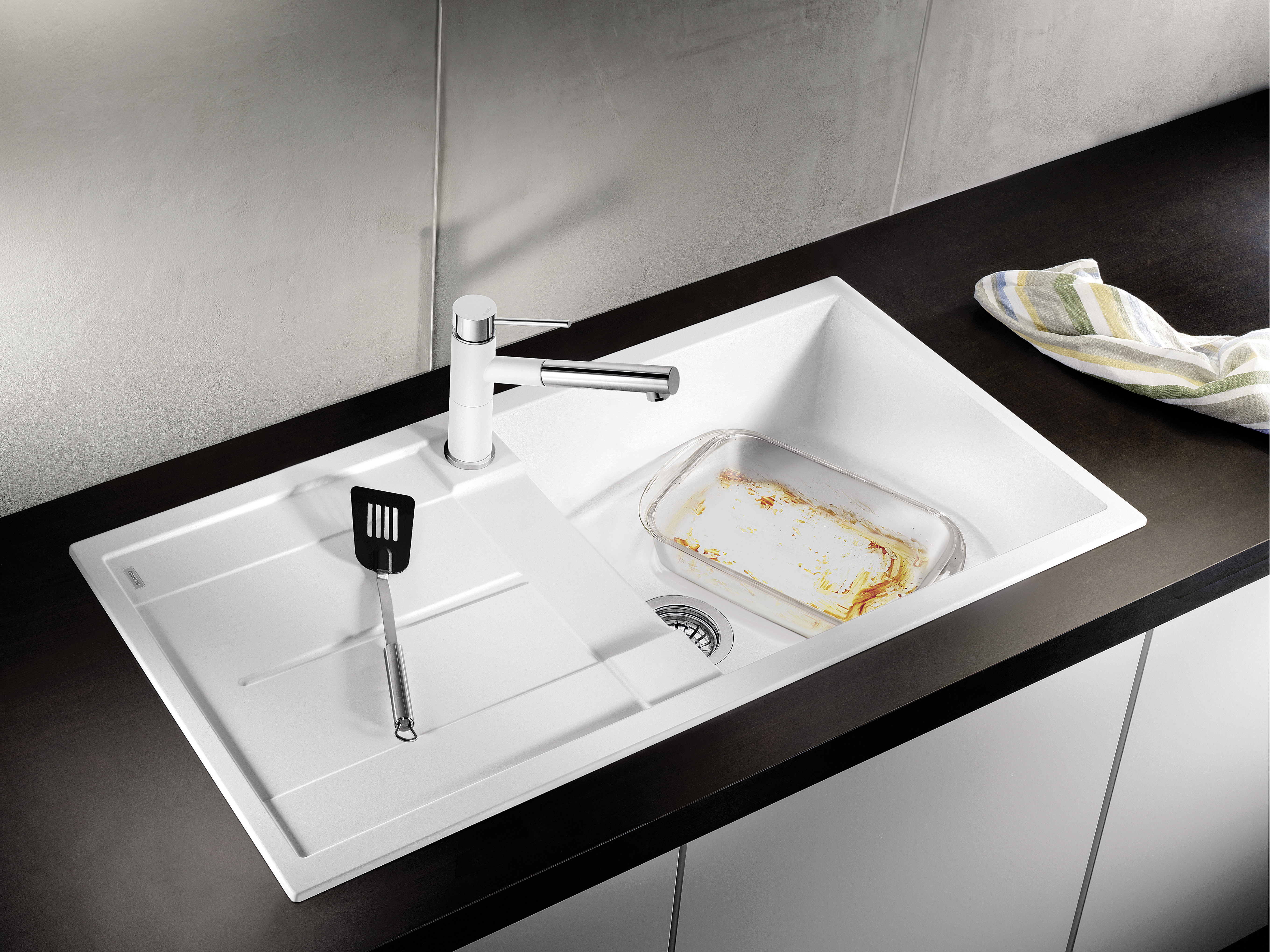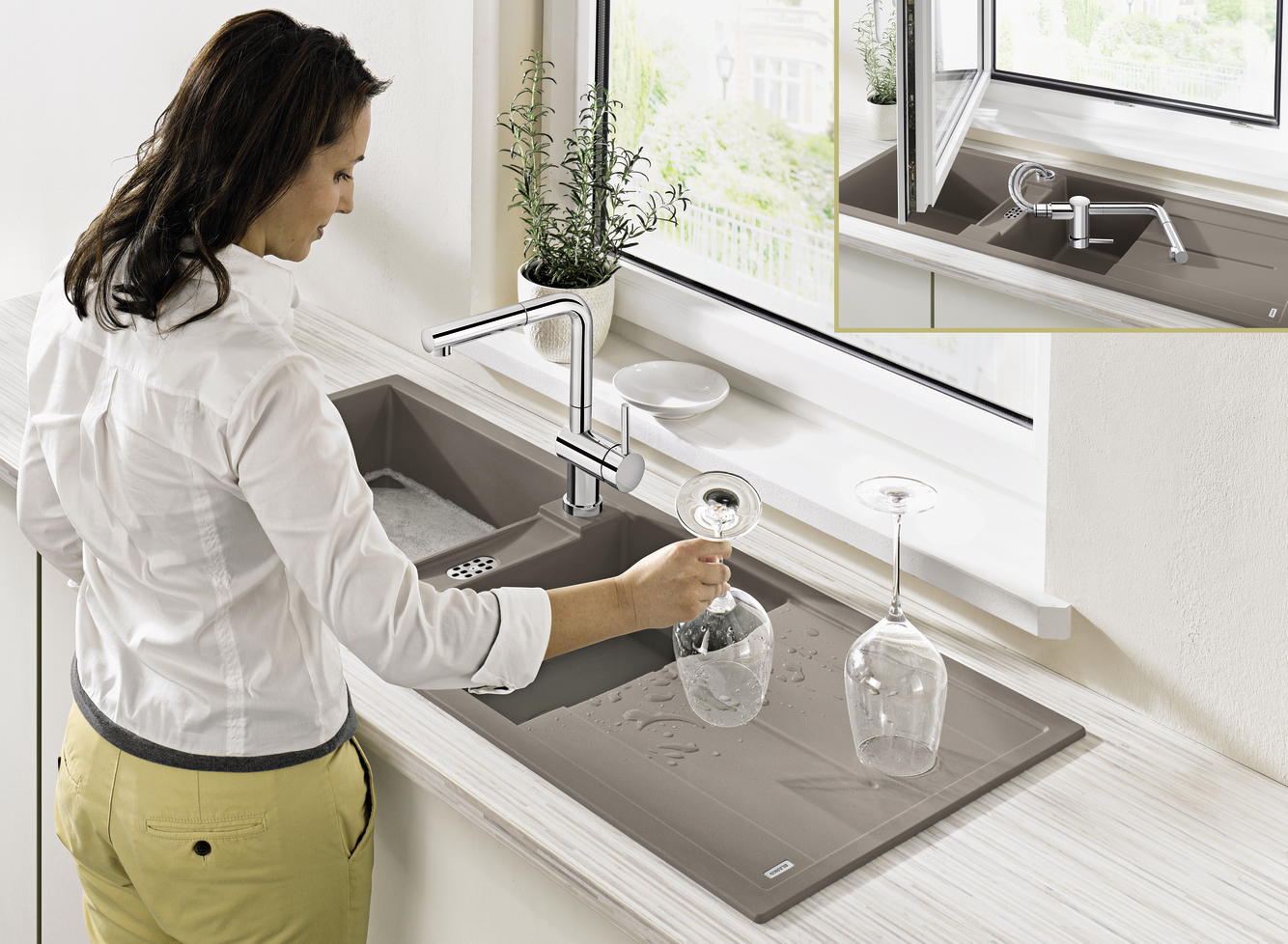1. Dispose of food leftovers
No matter whether you use the dishwasher or do the washing up by hand, you should get rid of any large bits of food waste first of all. The reason for this is that food remains can clog up the drain of both the sink and the dishwasher. Disposing of leftovers is particularly easy if you have a waste management system integrated directly beneath the sink:
a. For drawer and pull-out fronts, the BLANCO SELECT and BLANCO FLEXON waste systems with a combined organisational drawer are especially suitable.
b. For hinged doors, there’s the BLANCO BOTTOM PRO and BLANCO SINGOLO, which you can mount to the bottom of the base cabinet and pull out on rails.
2. Soak burnt-in substances

5. Let your dishes dry in the air
Tea towels also need to be washed. Cut down on the resources this requires and the time it takes to dry up by leaving the dishes to dry in the air.
It’s perfectly practical with clever sink accessories from BLANCO. Wedged in the bowl, a floating grid creates an extra functional level for drying dishes. Alternatively, you could simply place the practical crockery basket on the bottom of the bowl or extend your drainer with an adjustable drip tray.
